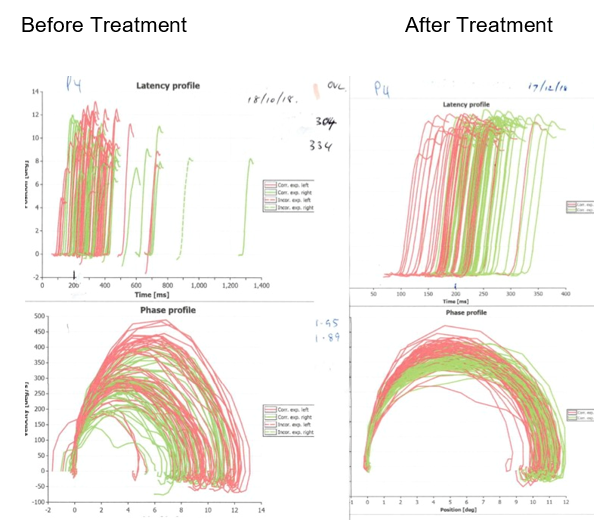Saccadometry Explanation
Saccadometry is for measuring eye movements.
Eye motion, when observing the visual environment consists of a sequence of fast eye movements called saccades. These occur around three times per second, followed by fixation periods of relative stability while observing a target object etc.
Our visual field is elliptical, being 50 deg above and 60 deg below horizontal and 80deg to either side. However the small fovea in the centre of the eye is where we see detail. It’s small, having the field size of a thumbnail at arms length, This means we have to shift our fovea around to see detail. A fish, being a lateral eyed animal, doesn’t do this. Its entire field of vision is in focus all the time. This is a phylogenetic trade off, of speed over detail. It’s less fussy about what it eats, but is very quick to catch it!
Saccadometry is the study and measurement of saccades, being rapid, ballistic movements of the eyes that are used to rapidly shift the focus of gaze (fovea) from one object to another. Saccadometry involves the use of specialised equipment to accurately measure various parameters of saccades, such as their velocity, amplitude, duration, latency, and accuracy. Understanding saccades is crucial in the study of the neurological control of eye movements, brain function, and cognition. Saccades are controlled by a complex neural network. It can be used in the diagnosis and management of various neurological disorders, like Concussion, Parkinson’s disease, Multiple Sclerosis, and Huntington’s disease, Progressive supranuclear palsy, and Spinocerebellar ataxia. It is also useful in the diagnosis of certain types of eye movement disorders, such as nystagmus or saccadic dysmetria. We especially use Saccadometry as a guide to show progress with treatment by comparing baseline measurements to normal values and the changes over time from treatment.

